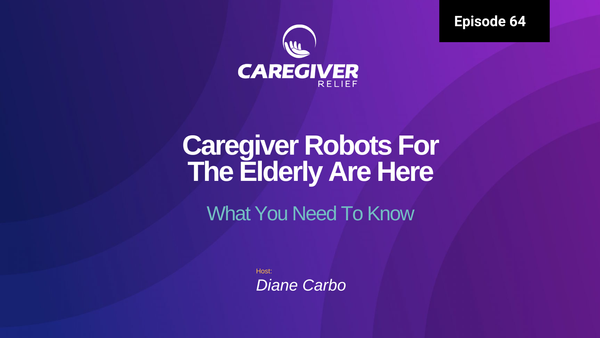Who is Eligible for Medicare Part D?

What is Medicare Part D?
Medicare Part D is a form of prescription drug coverage to help seniors and people with disabilities pay for their medication. It is administered through private insurance companies that contract with Medicare to provide comprehensive coverage for medications.
Who is Eligible For Medicare Part D?
In order to be eligible for Medicare Part D coverage, you must have Medicare Part A or Part B and live in the U.S. Medicare Part D enrollment is available to everyone who meets this criteria, regardless of age, income level, or other factors.
Why Should You Get Medicare Part D Coverage?
Having Medicare Part D coverage can help make sure that you get the treatments and medications you need to stay healthy and manage any chronic conditions. Without this coverage, you may have difficulty affording the expensive costs of prescription drugs. Additionally, Medicare Part D is designed to lower costs for people who take numerous medications regularly.
What Does Medicare Part D Cover?
Medicare Part D covers both generic and brand name prescription drugs. This coverage also includes immunizations and certain vaccines. It does not cover over-the-counter (OTC) medications, vitamins, or dietary supplements.
The specific drugs and services covered under Medicare Part D vary by insurance company and may change from year to year. You should review your policy thoroughly before enrolling in a plan to make sure that it covers the medications you need.
Who is Eligible for Medicare Part D?
Medicare Part D is a prescription drug coverage plan designed to help people 65 years or older, and those living with disabilities, cover the costs of their medications. In order to be eligible for a Part D plan, you must meet certain criteria.
If you are already enrolled in both Part A (hospital insurance) and Part B (medical insurance) of Medicare, then you are automatically eligible to enroll in a Part D plan. If you don’t have Part A or Part B, you may still be eligible for Part D, depending on your situation.
- If you are over 65 and reside in the U.S., you can qualify for Part D as long as you are enrolled in Medicare Parts A and/or B.
- People under 65 with a qualifying disability may also be eligible for Part D. In this case, they must be enrolled in both Medicare Parts A and B.
- People who already have creditable prescription drug coverage from another source, such as an employer or union plan, may still be eligible for Part D as long as they meet the eligibility requirements mentioned above.
Individuals who have been previously denied Part D coverage due to a lapse in Medicare eligibility may qualify for a Special Enrollment Period (SEP). The SEP allows these individuals to enroll in Part D up to three months after their Medicare coverage ends.
Coverage Options for Medicare Part D
Medicare Part D is a type of coverage that helps individuals pay for their prescription drugs. It’s available to people who are enrolled in Medicare Parts A and B. There are a number of different coverage options available for Part D, each with its own set of benefits and costs.
The most common types of Medicare Part D plans include:
- Standard Medicare Part D plan
- High-Deductible Medicare Part D plan
- Medicare Advantage Part D plan
A Standard Medicare Part D plan typically offers the most comprehensive coverage options, including the lowest premiums and coinsurance. These plans also provide some coverage for generic and name-brand medications. However, these plans often come with a deductible and have an annual spending limit.
A High-Deductible Medicare Part D plan has the same coverage as a standard plan, but with a much higher deductible. The downside of these plans is that the deductible is much higher than that of a standard plan. However, they tend to have lower premiums, and some may even have no premium at all.
Finally, Medicare Advantage Part D plans are offered through private insurance companies and are meant to supplement your existing Medicare coverage. They typically have the lowest premiums and provide the most comprehensive coverage. However, they also usually come with an annual spending limit.
It’s important to carefully consider the type of coverage you choose, as it can make a big difference in the amount you ultimately pay for your medications.
Enrolling in a Medicare Part D Plan
Enrolling in Medicare Part D can seem like a daunting process, but with a bit of guidance, it is actually quite simple. Here are the steps you need to take in order to get the coverage you need.
Before You Begin
Before enrolling in a Medicare Part D plan, you should make sure you meet the eligibility requirements as discussed earlier in this guide. Additionally, before signing up for a plan, you should decide what type of coverage you are looking for and how much you are willing to pay out-of-pocket for drugs.
Step 1: Choose a Plan
Once you know the type of coverage you need, it’s time to start shopping for plans! Medicare Plan Finder is an online tool that makes it easy to compare plans side-by-side. In addition, Medicare.gov also offers information to help you find the best plan for your situation.
Step 2: Enroll
Once you have chosen a plan, you can enroll in it by either calling the plan directly or visiting their website. It is important to keep in mind that you may need to verify your identity before enrolling.
Step 3: Start Using Your Plan
Your plan will begin once your enrollment is complete. At this point, you can begin taking advantage of the benefits provided by your plan. Make sure to keep your plan documents in a safe place, so you can refer to them later if needed.
Step 4: Note Important Dates
It is important to keep track of when you need to re-enroll in your plan and what the options are for coverage. For example, you may need to re-enroll during certain times of the year or switch plans in order to keep costs down.
Step 5: Review Your Coverage
Finally, once you are enrolled in a plan, be sure to review your coverage every now and then to make sure you are still getting the best deal. As your medical needs change, you may need to adjust your coverage accordingly.
By following these five steps, you can easily enroll in the right Medicare Part D plan for your needs. With the right plan in place, you will be able to get the prescription drug coverage you need at a price you can afford.
Costs of Medicare Part D Plans
Medicare Part D is an optional coverage for Medicare-eligible individuals to help pay for the cost of prescription drugs. While it can be a helpful and necessary coverage for many, it’s important to understand the costs associated with it before enrolling.
Premiums: All Medicare Part D plans require an annual premium, which is a set amount you have to pay each month in order to receive coverage for your prescription drugs. In 2021, the average monthly premium for a Part D plan in the United States was $40.50.
Deductibles: After paying the premium, you may have to pay a deductible before your plan begins to cover the cost of your prescriptions. The amount of the deductible varies from plan to plan and can range from $0 to $445 in 2021.
Copayments: After you meet your plan’s deductible, you will be responsible for copayments for covered drugs. This is a set amount that you will pay each time you fill a prescription. Copayment amounts also vary from plan to plan and are typically tiered. That means that different drugs may have different copayment amounts.
It’s important to do your research when looking for a Part D plan and take into account all of the costs associated with it. Comparing plans and understanding the costs ahead of time can help you choose the right plan for you.
Medicare Advantage Plans are an alternative to stand-alone Part D drug plans. These plans usually include Part D coverage and often other benefits such as vision, hearing, and dental care that stand-alone Part D plans may not offer.
Medicare Advantage Plans are required by law to offer the same level of coverage as Part D plans. However, there may be differences in cost and services between them.
For example, with a Medicare Advantage Plan, you may have an annual deductible before any coverage begins. Also, some plans may have different copayments or coinsurance than stand-alone Part D plans. In addition, some Medicare Advantage Plans may require you to use specific pharmacies or networks for your prescriptions, while stand-alone Part D plans may give you more flexibility.
Finally, some Medicare Advantage Plans may offer extra benefits, such as vision, hearing, dental, or additional prescription drug coverage, while stand-alone Part D plans typically do not.
It's important to compare the details of plans carefully when deciding between stand-alone Part D plans and Medicare Advantage Plans. Be sure to read the plan's Summary of Benefits and Coverage and understand what costs you may have to pay out of pocket.
Medicare Part D is a prescription drug insurance plan with the goal of providing affordable coverage to those in need. This plan comes with several options for coverage, as well as an opportunity for financial assistance. In this section, we'll discuss how people can get help with their Part D costs.
The federal government offers the Extra Help program, which is available to eligible low-income individuals and families. To be eligible for Extra Help, you must meet certain income and resource requirements. Eligible individuals can pay greatly reduced premiums, deductibles, and copayments.
You can apply for Extra Help through the Social Security Administration’s website. When you are approved for the program, your Part D plan will automatically adjust your premiums, deductibles, and copayment levels so that you receive the Extra Help.
In addition to the Extra Help program, some states have their own programs for providing additional assistance. Check with your state department of health services to see if they have any additional resources.
It’s important to remember that if your income or resources change during the year, it could affect your eligibility for the Extra Help program. Be sure to keep your contact information up to date with the Social Security Administration and your Part D plan to ensure that they have your most current information.
Changes & When to Enroll
It's important to know when you should make changes to your Medicare Part D plan. There are certain times of the year that it's beneficial to look at switching plans or adding more coverage. Additionally, there are different enrollment periods to keep in mind.
Medicare Open Enrollment runs from October 15th - December 7th each year. During this time, you can enroll in a new plan, switch from one Medicare Part D plan to another, or drop your coverage completely. You should take this time to review plans that you currently have and ensure they still meet your needs.
If you need to make changes outside of open enrollment, you may be eligible for a Special Enrollment Period. This allows individuals with certain qualifying life events, such as moving out of the plan’s service area, or marriage/divorce, to add or change their plans. Additionally, if you qualify for Extra Help due to income or resources, you may also be eligible to switch plans outside of the open enrollment period.
It's important to weigh your options and view all of the plans available prior to making any decisions. Choosing the right plan can help you maximize your health care coverage and savings.
Common Questions About Medicare Part D Coverage
If you have more questions about how Medicare Part D works, who is eligible, or how much it costs, this section aims to answer some of the most commonly asked questions.
- Who is eligible for Medicare Part D? Medicare Part D is available to people who are 65 and older, as well as those who are disabled and have been receiving Social Security Disability Insurance (SSDI) benefits for at least 24 months. Additionally, people who have End-Stage Renal Disease (ERSD) are also eligible for Medicare Part D.
- What does Medicare Part D cover? Part D plans typically cover a wide range of prescription drugs, including both generic and name-brand medications. Some plans may also cover certain over-the-counter medications, such as aspirin.
- How much does Medicare Part D cost? The cost of a Medicare Part D plan varies depending on the type of coverage you choose. Most plans include a monthly premium, annual deductible, and copayment or coinsurance charges when prescription medications are filled. Some plans also have additional fees for specialty drugs.
Medicare Part D is an important option for those eligible to receive coverage. This insurance plan helps pay for many of the costs associated with prescription drugs. Eligibility requirements, different coverage options, enrolling, costs, and availability of extra help for those who need it are all factors to consider when looking at Medicare Part D plans. It is important to make sure that your plan meets your needs and stays up-to-date with any changes that may occur during enrollment periods. Medicare Part D provides a range of coverage to help with prescription drug costs and can be a great option for those who qualify. For more detailed information on eligibility, costs, and other related topics, resources are available to help individuals make the best decision for their circumstances.
It's important to equip yourself with the latest information when it comes to Medicare Part D. To make sure you have the knowledge you need, we have put together a list of resources that can help.
Medicare Part D Resources
The official Medicare website is a good place to start for any question about Part D: https://www.medicare.gov/sign-up-change-plans/part-d-prescription-drug-coverage
The Centers for Medicare & Medicaid Services also provides more information on Part D coverage: https://www.cms.gov/medicare/part-d/overview
BenefitsCheckUp® is a program that helps you learn more about the available financial assistance programs that may be available to you for Part D coverage: https://www.benefitscheckup.org/
Additionally, the Medicare Rights Center provides extensive resources about Part D eligibility, enrollment, and cost assistance: https://www.medicarerights.org/publications/medicare-part-d/
If you have questions about Medicare Part D coverage, you can always call 1-800-MEDICARE (1-800-633-4227) or TTY/TDD 1-877-486-2048.
Ready to take the plunge? Medicare Part D coverage is an important part of any individual's healthcare plan. To get started, start by shopping for plans and comparing costs to determine what works best for you and your budget. Your local Social Security office or a State Health Insurance Assistance Program (SHIP) counselor can also help you make the right decision.
Once you've settled on a plan, it's time to apply. Visit the Social Security website to apply online or call them directly at 1-800-772-1213. Once you've applied, you'll need to include proof of identity, citizenship status, and income. You'll then receive notice of your enrollment in the mail.
If you enroll in the wrong plan or change your mind after the deadline has passed, you can still contact Social Security and ask for a review. Remember, it's important to understand all the details of your plan to ensure you're getting the best coverage possible.
Now that you know more about who is eligible for Medicare Part D and how to enroll, why not take the next step and start planning for the future?




